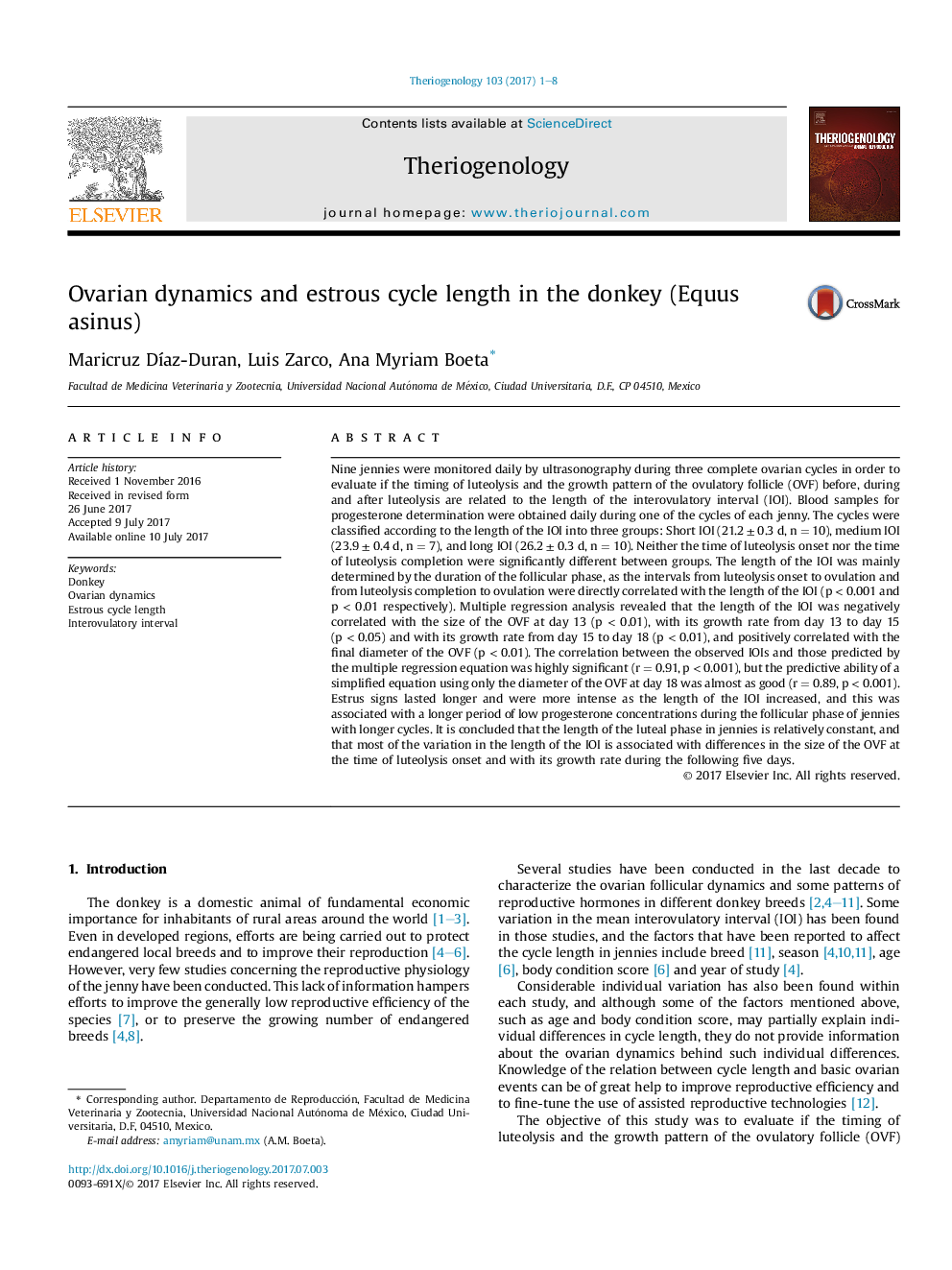| Article ID | Journal | Published Year | Pages | File Type |
|---|---|---|---|---|
| 5522895 | Theriogenology | 2017 | 8 Pages |
â¢The relation between ovarian dynamics and interovulatory interval was studied in jennies.â¢The timing of luteolysis is not related to interovulatory interval.â¢The length of the follicular phase is directly correlated to cycle length.â¢The size of the ovulatory follicle at the time of luteolysis is negatively related to cycle length.â¢The growth rate of the ovulatory follicle from day 13-18 is negatively related to cycle length.
Nine jennies were monitored daily by ultrasonography during three complete ovarian cycles in order to evaluate if the timing of luteolysis and the growth pattern of the ovulatory follicle (OVF) before, during and after luteolysis are related to the length of the interovulatory interval (IOI). Blood samples for progesterone determination were obtained daily during one of the cycles of each jenny. The cycles were classified according to the length of the IOI into three groups: Short IOI (21.2 ± 0.3 d, n = 10), medium IOI (23.9 ± 0.4 d, n = 7), and long IOI (26.2 ± 0.3 d, n = 10). Neither the time of luteolysis onset nor the time of luteolysis completion were significantly different between groups. The length of the IOI was mainly determined by the duration of the follicular phase, as the intervals from luteolysis onset to ovulation and from luteolysis completion to ovulation were directly correlated with the length of the IOI (p < 0.001 and p < 0.01 respectively). Multiple regression analysis revealed that the length of the IOI was negatively correlated with the size of the OVF at day 13 (p < 0.01), with its growth rate from day 13 to day 15 (p < 0.05) and with its growth rate from day 15 to day 18 (p < 0.01), and positively correlated with the final diameter of the OVF (p < 0.01). The correlation between the observed IOIs and those predicted by the multiple regression equation was highly significant (r = 0.91, p < 0.001), but the predictive ability of a simplified equation using only the diameter of the OVF at day 18 was almost as good (r = 0.89, p < 0.001). Estrus signs lasted longer and were more intense as the length of the IOI increased, and this was associated with a longer period of low progesterone concentrations during the follicular phase of jennies with longer cycles. It is concluded that the length of the luteal phase in jennies is relatively constant, and that most of the variation in the length of the IOI is associated with differences in the size of the OVF at the time of luteolysis onset and with its growth rate during the following five days.
